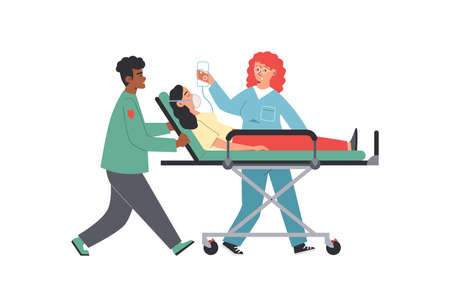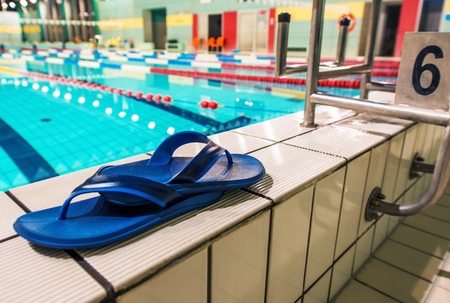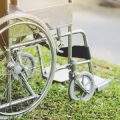Introduction to Hydrotherapy and Land-based Exercises
In the United Kingdom, physiotherapy and rehabilitation services frequently employ a range of therapeutic interventions, with hydrotherapy and land-based exercises being two of the most prominent. Hydrotherapy, also known as aquatic therapy, involves performing specific exercises in a heated pool under the supervision of trained professionals. This approach leverages the properties of water—buoyancy, resistance, and warmth—to facilitate movement, reduce pain, and support physical recovery. It is commonly prescribed for patients with musculoskeletal disorders, post-surgical conditions, neurological impairments, or chronic pain issues. On the other hand, land-based exercises refer to traditional physiotherapy activities carried out on solid ground, whether in a clinic setting, gymnasium, or at home. These exercises are tailored to improve strength, flexibility, balance, and functional mobility through techniques such as stretching, resistance training, and aerobic conditioning. In UK clinical practice, both methods are integral to multidisciplinary care pathways; however, their selection often depends on individual patient needs, safety considerations, and resource availability within NHS or private healthcare settings. Understanding these foundational therapies is essential for appreciating their respective roles and effectiveness in the broader context of UK rehabilitation.
2. Historical and Cultural Context in the UK
The United Kingdom has a rich tradition in both hydrotherapy and land-based rehabilitation, each shaped by historical developments, healthcare policies, and societal attitudes. Understanding this context helps clarify why both modalities hold distinct roles within British physiotherapy and rehabilitation services.
Hydrotherapy: From Victorian Spas to Modern NHS Pools
Hydrotherapy, historically known as aquatic therapy or water cure, found its roots in the UK during the Victorian era. Spa towns such as Bath and Harrogate became famous for their therapeutic waters, attracting people seeking relief from various ailments. As medical science advanced, hydrotherapy evolved from leisure activity into an evidence-based treatment used in hospitals and clinics. Today, hydrotherapy is recognised by the NHS as a valuable intervention for conditions ranging from musculoskeletal disorders to neurological rehabilitation.
NHS Provisions and Accessibility
Despite clinical endorsement, access to hydrotherapy is somewhat limited within the NHS due to resource constraints. Not every hospital or clinic offers dedicated hydrotherapy pools, leading to regional variations in availability. Private facilities may supplement NHS provision, but cost can be a barrier for some patients. Below is a summary of hydrotherapy accessibility:
| Region | NHS Hydrotherapy Pool Availability | Private Facility Options |
|---|---|---|
| England (Urban) | Moderate | High |
| England (Rural) | Low | Moderate |
| Scotland/Wales/Northern Ireland | Variable | Low-Moderate |
Land-based Exercises: The Backbone of Rehabilitation
Land-based exercises have long been the cornerstone of physiotherapy in the UK. Their popularity is partly due to practicality—requiring minimal equipment, they are accessible in most settings, including community centres and patients’ homes. The NHS widely supports land-based programmes for a spectrum of conditions, from post-operative recovery to chronic disease management.
Cultural Perceptions and Public Engagement
The British public generally perceives land-based rehabilitation as straightforward and familiar, while hydrotherapy is sometimes viewed as a specialist or luxurious option. However, public health campaigns and patient advocacy groups have raised awareness about the clinical benefits of both approaches, encouraging broader acceptance across different demographics.
Current Status Comparison Table
| Aspect | Hydrotherapy | Land-based Exercises |
|---|---|---|
| NHS Support | Selective/Conditional | Widespread/Standard |
| Accessibility | Limited/Variable | High/Universal |
| Cultural Familiarity | Moderate/Specialist Perception | High/Commonplace |
| Main Patient Groups | M/SK Disorders, Neurological Conditions | M/SK Disorders, General Rehab, Chronic Illnesses |
This historical and cultural overview demonstrates how both hydrotherapy and land-based exercises have become integral—but differently positioned—within the UKs rehabilitation landscape.

3. Clinical Effectiveness: A Comparative View
When evaluating hydrotherapy and land-based exercises within the UK context, it is essential to scrutinise their clinical effectiveness for prevalent health conditions, particularly arthritis and post-surgical rehabilitation. The National Institute for Health and Care Excellence (NICE) guidelines, as well as numerous peer-reviewed studies, provide a robust evidence base for both interventions.
Arthritis Management
For individuals with osteoarthritis and rheumatoid arthritis—a significant portion of the UK population—hydrotherapy offers unique advantages. Immersion in warm water reduces joint load and pain, facilitating movement that might otherwise be restricted on land. Several UK-based randomised controlled trials have demonstrated statistically significant improvements in pain relief, joint mobility, and quality of life following supervised aquatic therapy sessions compared to usual care or no intervention.
Land-based Exercise Outcomes
Land-based exercises, however, remain the mainstay for long-term arthritis management due to their accessibility and adaptability. Evidence from systematic reviews suggests that regular strength and flexibility training on land leads to comparable improvements in functional outcomes over time. Importantly, land-based programmes often promote greater adherence once integrated into daily routines, which is crucial for sustained benefit.
Post-Surgical Rehabilitation
In the context of orthopaedic rehabilitation—such as after total knee or hip replacements—both modalities are widely used across NHS trusts. Hydrotherapy can expedite early-stage recovery by enabling gentle movement without excessive strain on healing tissues. Randomised studies conducted in UK hospital settings have shown faster gains in range of motion and reduced swelling among patients participating in aquatic therapy during the initial weeks post-surgery.
Long-Term Functional Gains
Nevertheless, as patients progress, transition to land-based exercise is generally recommended to rebuild strength and support safe return to daily activities. Comparative research indicates that while hydrotherapy may offer an early advantage in pain reduction and confidence building, long-term functional gains tend to equalise when patients engage consistently with structured land-based rehabilitation protocols.
Summary of Evidence
In summary, both hydrotherapy and land-based exercises demonstrate clinically meaningful benefits for common musculoskeletal conditions seen in the UK. Hydrotherapy’s buoyancy and warmth make it especially suitable for those with severe pain or limited mobility at the outset, while land-based exercises deliver sustainable functional improvements crucial for independence. Ultimately, the choice between interventions should be tailored to individual needs, access to facilities, and local NHS service provision.
4. Practical Considerations: Facilities, Cost, and Accessibility
When comparing hydrotherapy and land-based exercises within the UK, it is essential to address the practical aspects that influence patient access and therapy outcomes. This section discusses the availability of facilities, associated costs, distinctions between NHS and private sector services, and how geographical factors impact accessibility for individuals seeking rehabilitation or therapeutic exercise.
Availability of Hydrotherapy Pools
Hydrotherapy pools are a specialised resource in the UK, generally found in larger NHS hospitals, rehabilitation centres, or private clinics. However, their distribution is uneven across the country. Urban areas tend to have better access to such facilities compared to rural regions. Conversely, land-based exercise facilities are widely available through local gyms, community centres, and physiotherapy departments.
| Facility Type | Urban Access | Rural Access |
|---|---|---|
| Hydrotherapy Pool | Moderate to High | Low |
| Land-based Exercise Facility | High | Moderate to High |
Costs for Patients
The financial implications for patients differ substantially between hydrotherapy and land-based exercises. Hydrotherapy sessions often incur higher costs due to pool maintenance, staffing requirements, and limited availability. While some NHS trusts may provide hydrotherapy as part of prescribed treatment plans free at the point of use, waiting lists can be long. In contrast, private sector hydrotherapy typically requires out-of-pocket payments or private insurance coverage. Land-based exercises are generally less expensive and may even be incorporated into standard physiotherapy appointments on the NHS.
| Service Type | NHS Cost (Patient) | Private Sector Cost (Patient) |
|---|---|---|
| Hydrotherapy Session | No direct cost (if eligible), but limited slots | £30-70 per session* |
| Land-based Exercise Session | No direct cost (usually included in physiotherapy) | £20-40 per session* |
*Approximate 2024 prices; actual costs vary by region.
NHS vs Private Sector Provision
The NHS prioritises evidence-based therapies and cost-effectiveness, leading to restricted access to hydrotherapy—often reserved for complex cases or where land-based alternatives have failed. In comparison, private providers may offer more flexible scheduling and immediate access but at a significant cost. Patients need to weigh potential benefits against these financial considerations and service differences.
Geographical Disparities in Access
A notable challenge within the UK context is the geographical disparity in service provision. Regions with major hospitals or rehabilitation centres are more likely to offer hydrotherapy, while remote or less densely populated areas may lack any suitable facilities. This reality often means patients must travel considerable distances for hydrotherapy sessions—a barrier not typically encountered with land-based programmes.
5. Patient Experience and Cultural Perspectives
An Exploration of Patient Attitudes and Preferences in the UK
In the context of the United Kingdom, patient experience plays a pivotal role in shaping the uptake and perceived efficacy of both hydrotherapy and land-based exercises. British patients often value personalised care, accessibility, and the ability to integrate rehabilitation activities into their daily routines. Hydrotherapy is frequently described as a “welcoming” or even “luxurious” intervention, especially in NHS or private centres where modern facilities are available. Many patients report that the buoyancy of water provides not only physical relief but also psychological comfort—helping those with chronic pain, arthritis, or mobility issues to exercise with reduced fear of injury.
Cultural Factors Influencing Participation
The British climate and infrastructure can present practical barriers to hydrotherapy: access to pools is not universal, and there is often a waiting list for NHS-provided hydrotherapy sessions. Additionally, some individuals from diverse cultural backgrounds may feel uncomfortable wearing swimwear in public or participating in mixed-gender sessions, which can affect attendance rates. In contrast, land-based exercises—such as walking groups, Pilates, or physiotherapy in local community halls—are generally more accessible and familiar to most Britons.
Behavioural Trends and Barriers
Behaviourally, UK patients demonstrate a preference for interventions that are easy to access, require minimal travel, and fit around work or family commitments. Cost can be a significant barrier; while NHS hydrotherapy is free at point of use, limited availability means many turn to private providers at personal expense. Weather also influences behaviour: inclement conditions might deter outdoor land-based activity but have less impact on indoor pool-based therapy.
Personal Testimonies
Personal testimonies from British patients reveal a spectrum of experiences. One common theme is gratitude for hydrotherapy’s gentle approach: “I was able to move without pain for the first time in years,” says one participant from Manchester. Conversely, others cite embarrassment about body image or reluctance to enter communal changing areas as reasons for preferring land-based options. For some, local exercise classes offer not just physical benefits but valuable social interaction—especially important in rural or isolated communities.
Ultimately, cultural expectations around privacy, modesty, and convenience shape patient choices between hydrotherapy and land-based exercises across the UK. Understanding these nuanced perspectives enables clinicians to tailor recommendations that are both effective and culturally sensitive.
6. Sustainability and Future Directions
Assessing the sustainability of hydrotherapy versus land-based exercises within the UK context requires a careful look at environmental impact, alignment with public health policy, and the role of innovation in shaping future services. Hydrotherapy pools, while clinically effective, are energy-intensive to operate due to heating requirements and water usage. This raises questions about their carbon footprint, especially as the NHS and local authorities strive for greener healthcare solutions. In contrast, land-based exercise programmes generally have a lower environmental impact, often utilising existing community spaces or outdoor environments that require minimal additional resources.
From a public health policy perspective, both approaches are being shaped by the UKs commitment to preventative healthcare and inclusivity. The growing emphasis on social prescribing—where GPs recommend non-medical activities such as group exercise—favours scalable land-based options. However, hydrotherapy remains vital for populations with specific needs, including those with severe mobility restrictions or chronic pain conditions who may not benefit from traditional gym-based activities.
Innovation is beginning to bridge some of these challenges. Advances in pool technology, such as improved insulation and heat recovery systems, aim to make hydrotherapy more sustainable. Digital platforms and remote monitoring are enhancing both hydrotherapy and land-based services, allowing tailored rehabilitation plans and better outcome tracking. In urban areas, partnerships between councils, leisure centres, and NHS trusts are experimenting with hybrid models that blend aquatic and land-based therapies for maximum reach and efficiency.
Looking forward, the future direction of these services in the UK will depend on ongoing research into clinical outcomes, cost-effectiveness, and ecological responsibility. There is also a growing call for co-design with patients and communities to ensure services are culturally relevant and accessible. Ultimately, striking a balance between environmental stewardship, equitable access, and clinical excellence will determine how hydrotherapy and land-based exercise services evolve to meet the needs of a changing British society.

